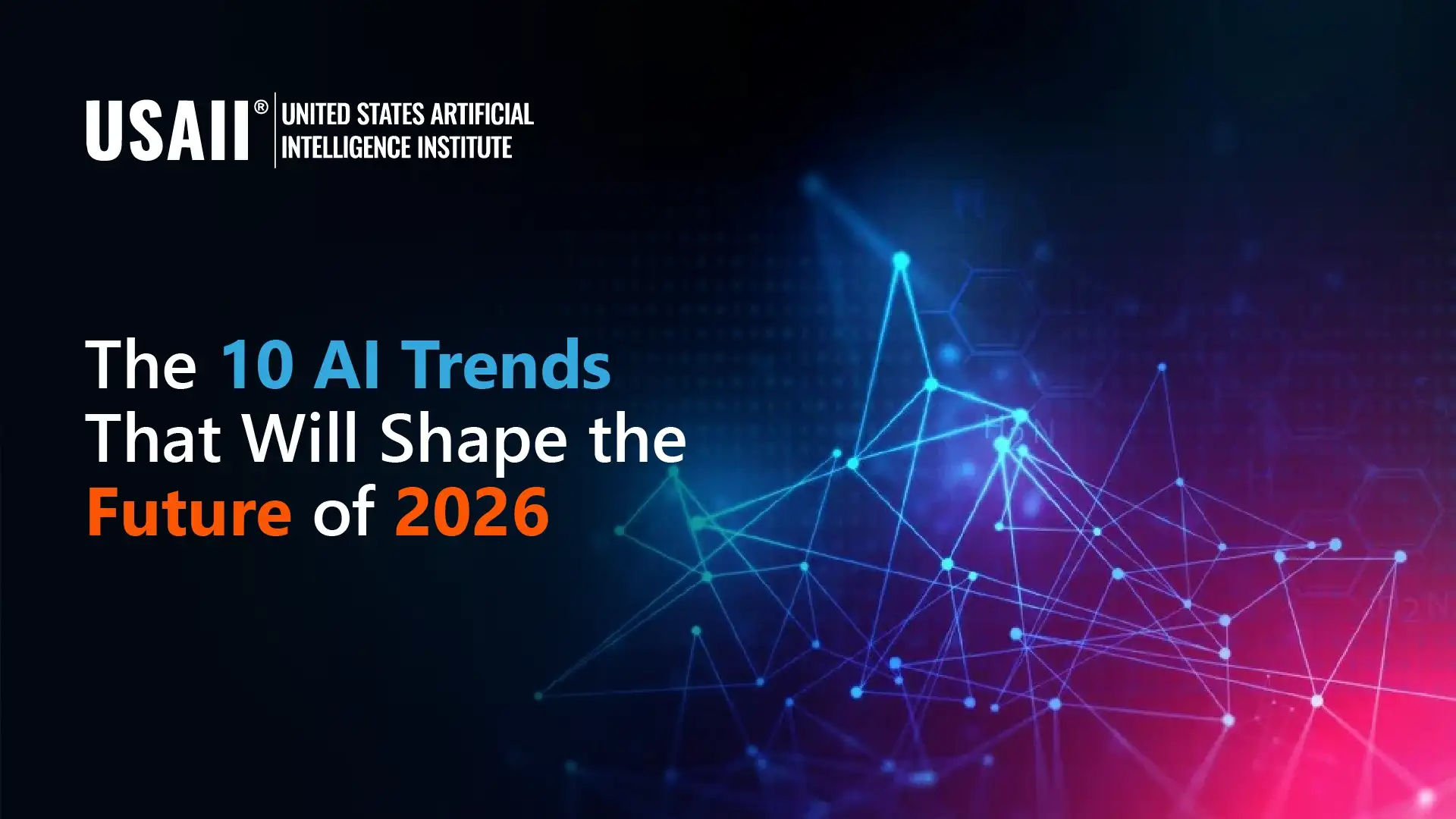
Picture entering a reality, not a science fiction concept, but a space where your digital assistant comprehends your instructions and can predict what you intend to do next. Factories hum with autonomous robots, compelling creative content, from music to 3D renderings, is created in less than a second, and personalized services operate on AI systems that improve with every interaction. AI is defining reality as we near 2026.
Artificial Intelligence is rapidly evolving beyond a tool and emerging as a strategic partner in businesses, a driver of innovation, and a critical skill set for individuals. Gartner predicts that 40% of enterprise applications will leverage task-specific AI agents by 2026, compared to less than 5% in 2025. These statistics suggest a deep transformation: AI is progressing from supportive automation to autonomous decision-making, affecting industries across the world.
To keep pace with all of this change, it is important to grasp the Artificial Intelligence trends on the horizon for 2026. Let’s explore 10 significant trends that will alter our daily life, our work, and how we innovate.
1. Agentic AI
Agentic AI is defined as intelligent systems that can independently set their goals, make decisions, and issue multi-step tasks with minimal human intervention. Agentic AI represents a move beyond automation to managing adaptive, dynamic workflows; in other words, agentic AI acts as a true digital collaborator.
Key Use Cases:
Customer support representatives who independently prioritize and handle support requests.
Real-time supply chain agents that maximize procurement, logistics, and inventory.
Finance professionals manage compliance checks, fraud warnings, and portfolio modifications.
Key Predictions for 2026 as per Deloitte:
Scaling from pilots to production: Agentic AI will expand across large enterprises, moving from experimental use cases to mainstream deployment, especially with more “out-of-the-box” solutions available.
Governance takes center stage: With rising autonomy, organizations will adopt stricter governance frameworks, ethical usage policies, and agent accountability standards.
Workforce transformation: New roles such as agent ops teams will emerge, focused on training, monitoring, and improving AI agents. Reskilling programs will support employee adaptation to AI-integrated workflows.
“Current survey by Deloitte data highlights that while over half of AI leaders are still in pilot phases, nearly half of broader respondents expect autonomous AI agents to significantly transform their organizations within the next 2-3 years.”
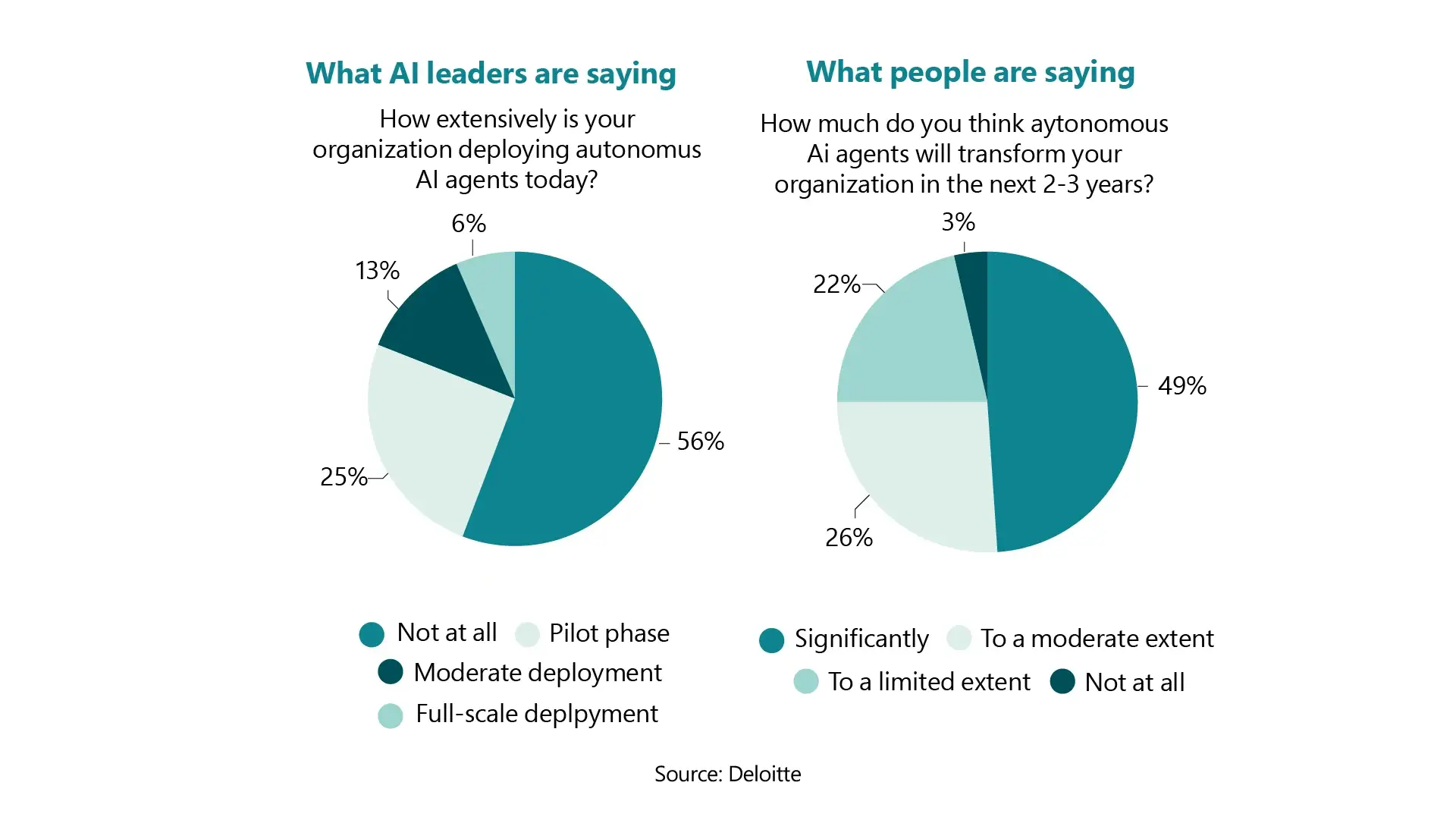
Why It Matters:
Agentic AI allows organizations to automate complex, adaptive processes, giving leverage to human talent to do higher-value work. As acceleration in adoption occurs, organizations that combine strong governance and strategic deployment will create efficiency, innovation, and competitive differentiation.
2. AI Prompt Engineers and Human-AI Interaction
As AI models grow in complexity, prompt engineering is evolving as a crucial skill. Prompt engineers create specific inputs that will guide an AI system to generate accurate, relevant, and ethical outputs.
Importance:
It maximizes the accuracy and efficiency of the AI.
It ensures that the outputs align with human values and organizational objectives.
It creates a bridge between what technical AI can do and how to apply those applications to business.
For example, marketing teams are utilizing prompt engineering to quickly develop personalized campaigns, while research teams are applying it to summarize competing data sets. Workers with AI skills like prompt engineering now command a 56% wage premium (up from 25% last year), reflecting the value these professionals bring, according to PwC’s The Fearless Future: 2025 Global AI Jobs Barometer.
Prompt engineering will emerge as a unique career path by 2026, a key contributor to unlocking the capacity of AI to make meaningful, maximized systems.
3. AI-Driven Workplace Transformation
Artificial intelligence is not only automating work but is also transforming the culture in which we work. By utilizing predictive analysis, process automation, and intelligent collaboration tools, companies can improve workflows and move employees to higher-value work.
Examples:
AI-powered project management tools are capable of predicting bottlenecks and resource needs.
Intelligent HR systems are analyzing employee engagement and performance indicators.
AI-powered virtual assistants are expediting ordinary communications and scheduling.
AI transformation is well underway. As shown in the chart below, 72% of companies use GenAI tools like ChatGPT and Copilot to boost productivity, but adoption is just the beginning. 50% are redesigning workflows, and 22% are creating new business models with AI. BCG finds top performers invest 80% of their AI budget in reshaping and innovating, not just deploying tools.
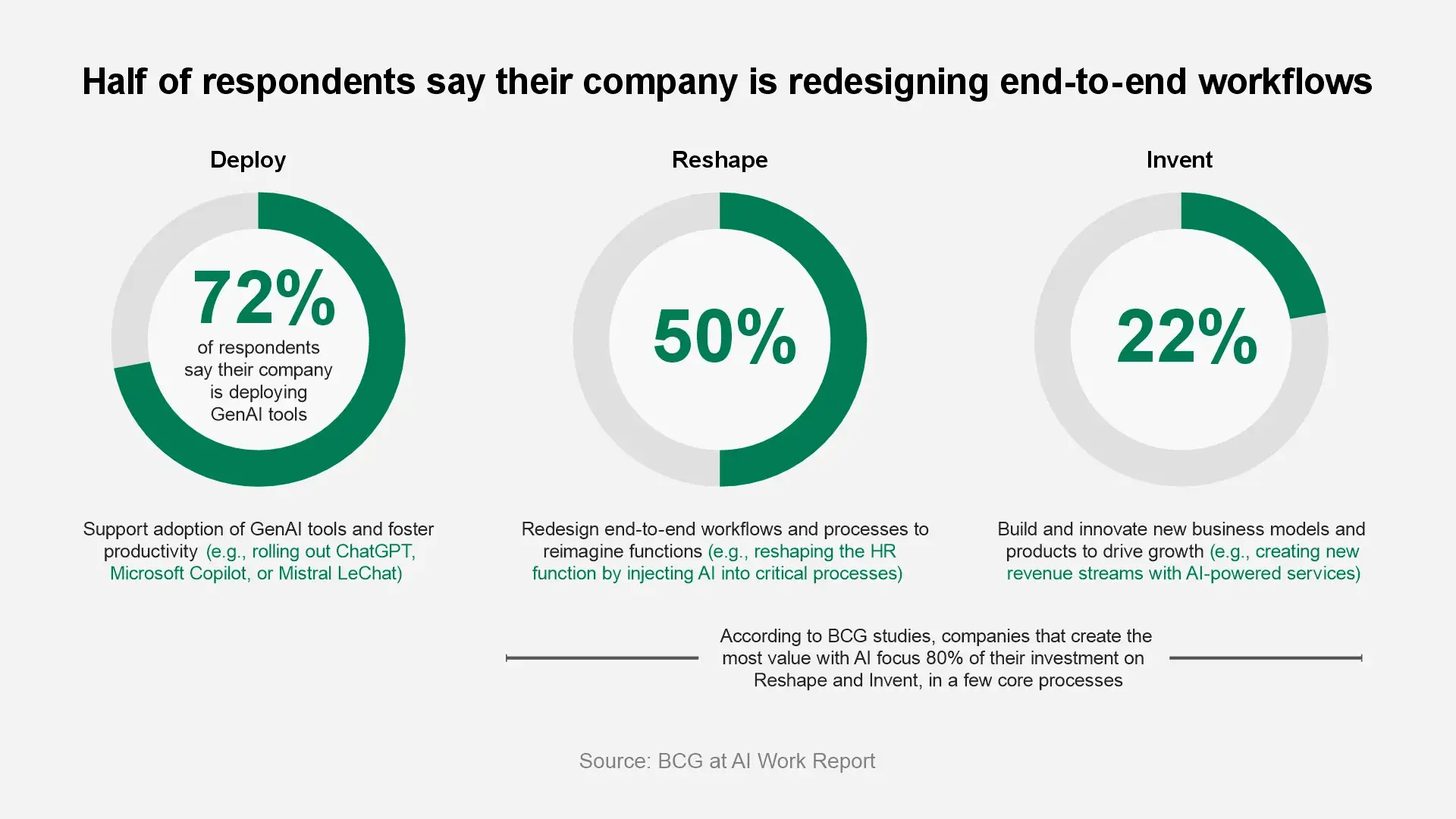
4. Physical AI
By integrating artificial intelligence with robotics, autonomous systems, IoT devices, and smart infrastructure, Physical AI bridges the gap between the digital domain and the physical world. These systems can sense, provide visuals, decide, and act in all types of physical environments, from warehouse robots and surgical assistants to delivery drones and smart traffic systems.
By instilling intelligence into machines and physical environments, Physical AI improves safety, efficiency, and responsiveness in a wide range of industries and applications that previously proved too difficult or too expensive to automate.
For example, “As per the Deloitte survey, 44% of AI leaders foresee extensive Physical AI adoption within two years, while 36% of respondents expect significant impact, signaling strong alignment on its transformative role.”
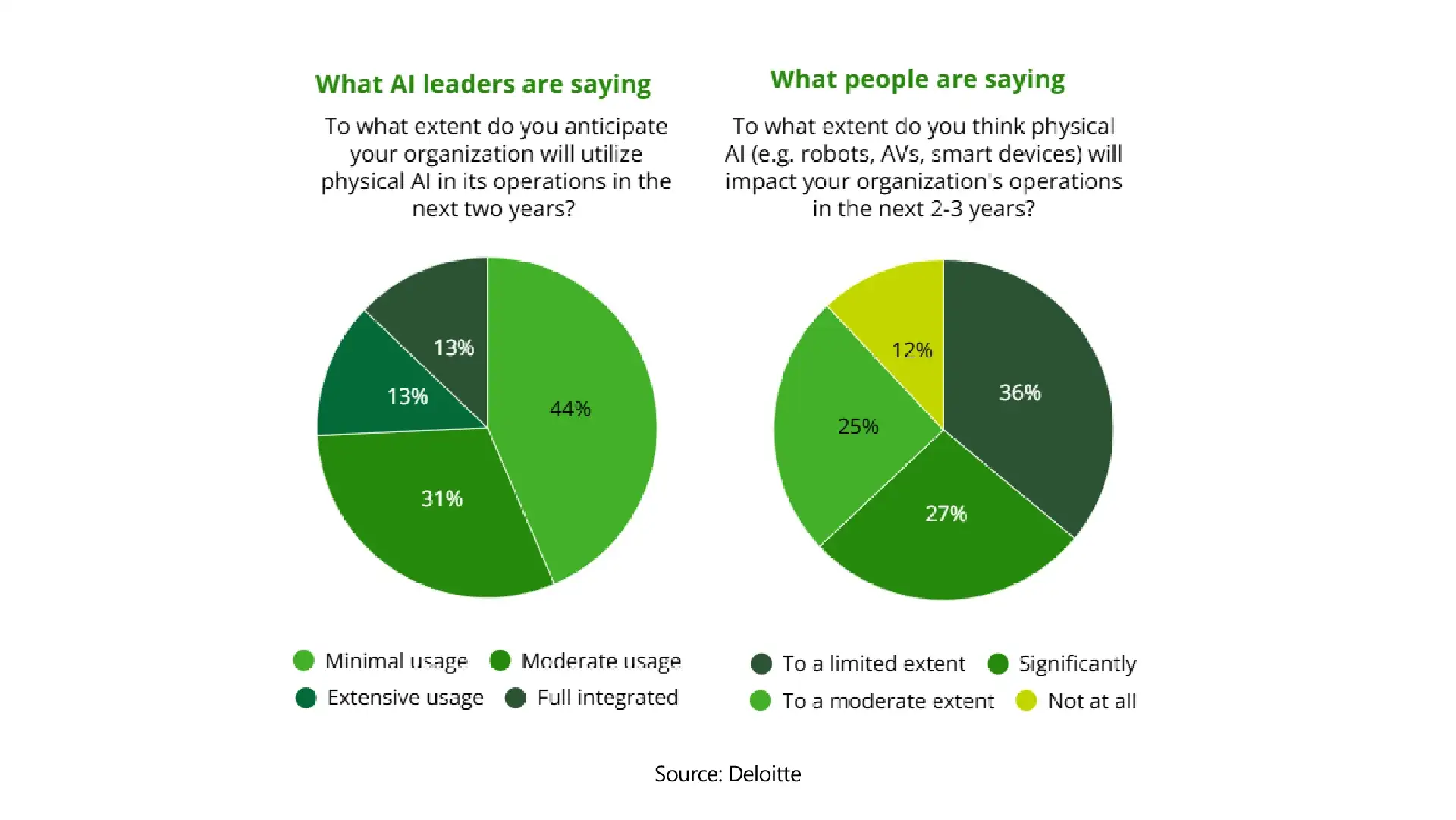
Key Predictions for 2026 as per Deloitte:
Rapid Adoption: Fastest growth in manufacturing, logistics, healthcare, and agriculture.
Safety Focus: Emphasis on fail-safes, sensors, cyber defenses, and auditability.
Collaboration & Skills: More frontline support, with reskilling and intuitive interfaces for workers.
5. Artificial General Intelligence (AGI)
AGI refers to AI systems with human-like intelligence—able to learn, reason, and solve problems across different domains without task-specific training. Unlike narrow AI, AGI can adapt and generalize like a human mind.
As explored in USAII’s recent insights “Artificial General Intelligence (AGI): Challenges & Opportunities Ahead,” AGI also presents vast opportunities, from scientific discovery and automation of advanced cognitive tasks to new forms of human-AI collaboration and innovation acceleration across industries.
Key Examples of Progress:
AI capable of working across multiple modalities, such as text, images, and voice, like GPT-4o and Gemini.
Autonomous agents in the scientific and research contexts, generating hypotheses and analyzing data.
Reasoning AIs, which support legal, financial, and strategic decision-making.
What to Expect by 2026:
Enterprise-wide early implementations of AGI systems for cross-functional processes.
Scientific and creative breakthroughs enabled by general-purpose AI models.
Governments are increasing AGI safety and regulations for the emerging risk environment.
Broader integration of AI co-pilots enabling reasoning and actions across tools and workflows.
6. Multimodal AI
Multimodal AI systems are capable of simultaneously processing and integrating multiple forms of data, such as text, images, video, and sound. This creates interpretative possibilities that would not occur otherwise.
Use Cases include:
AI analyzes videos along with transcripts of customer reactions to extract valuable insights.
Intelligent password surveillance that considers audio along with video observations to make determinations about individuals and their behavior.
Health monitor-driven AI that considers patient medical images as well as patient records to create a more complete understanding of diagnosis and care.
By 2026, multimodal AI will be a mainstay of many industries that deal with complex and divergent datasets as they attempt to harness the data in order to create informed decisions.
7. Sovereign AI
Sovereign AI is the term applied to appropriate AI systems that involve the control of AI systems within a brand, country, or other nation-state that can improve data privacy, data security, and data governance. By keeping data, models, and the ability to compute, it mitigates geopolitical risk, legal risk, and operational risk.
As per Deloitte's recent survey, “38% of AI leaders rate data residency and regional computing as very important, while 49% of respondents see it as a significant factor in the next 1–2 years, showing growing urgency for Sovereign AI.”
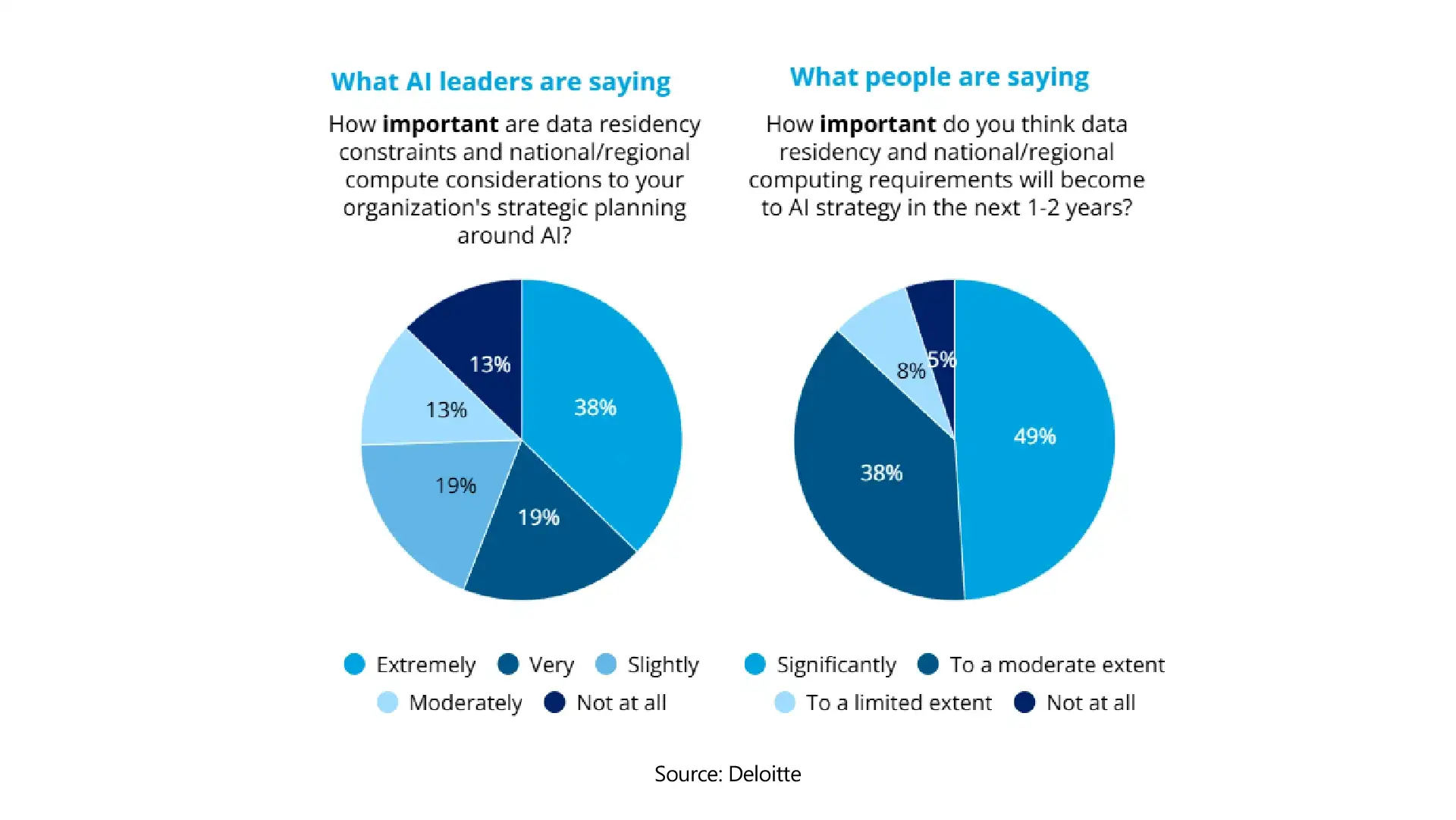
Key Predictions for 2026 by Deloitte:
Increased Regulatory and Compliance Pressure: Governments across the world will enact new AI and data privacy regulations, forcing organizations to take action on compliance and governance.
Increased Demand for Sovereign AI: Organizations will begin to employ solutions that provide localized data and compute capabilities as part of their multi-cloud and edge strategies.
Emergence of Regional AI Hubs: Nations and regions will create local AI ecosystems to spur innovation, retain talent, and reduce reliance on foreign AI service providers.
Sector Impact: Stronger local data control, better compliance, and increased confidence in AI systems are anticipated in the fields of healthcare, banking, and public services.
8. Synthetic Content and Media
Synthetic content generated by AI, including text, audio, video, and 3D assets, is revolutionizing media, marketing, and entertainment in real time. By automating production and personalizing it in real time, it is changing how content is produced and consumed.
Key Use Cases:
Auto-generated videos for ads and social media
AI music and soundtracks for films and games
Personalized content tailored to individual users
What to Expect by 2026:
Extensive usage of AI content technologies and text-to-video
Production across creative teams is quicker and less expensive.
An increase in hyper-individualized, real-time media experiences
Why It Matters:
Synthetic content gives early adopters a significant competitive edge in content-driven sectors by accelerating invention, lowering costs, and scaling personalisation.
9. Invisible AI
Invisible AI can be seamlessly integrated into devices and services, allowing users to experience no change in interface or dynamics. Users will experience the interactions with the AI, as it works like a utility; it makes life more convenient, efficient, and personalized without them even realizing it.
Examples:
Smart home systems that automatically adjust lighting, temperature, and energy consumption to improve the user experience.
Voice assistants that schedule meetings, send reminders, and recommend things to the user.
AI-based traffic management systems that enhance urban mobility in real-time.
This extends the overall trend of the transformative capabilities of AI throughout daily life.
10. AI in Healthcare
AI is changing the face of healthcare, facilitating earlier diagnoses, personalized treatment plans, and streamlined hospital operations. Machine learning models can analyze medical imaging, patient histories, and genetic data to discover patterns that clinicians cannot see.
Examples and impact:
AI-assisted imaging analysis for early cancer detection.
Predictive models to forecast patient admissions to assist with hospital resource management.
Virtual assistants for reminding about medications and monitoring health for patients with chronic conditions.
By 2026, AI will not only increase efficiency but also improve patient outcomes and lower costs, making it instrumental to modern healthcare systems.
Other Emerging AI Trends in 2026
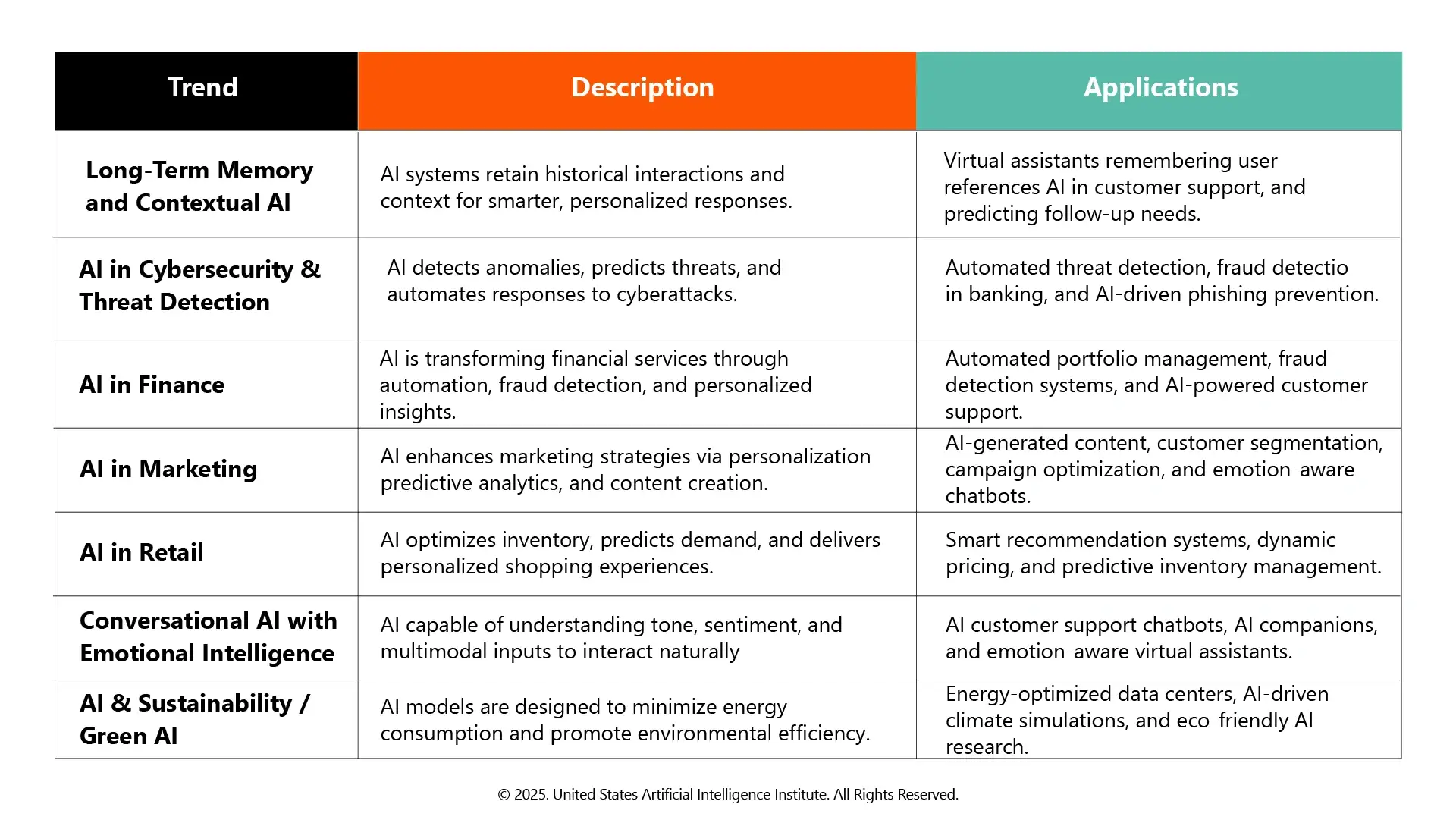
Preparing for an AI-Centric Future
To thrive in 2026 and beyond:
Build AI Skills: Become proficient in agentic AI, prompt engineering, multimodal AI, and other nascent AI technologies, as it is a great way to stay ahead of the crowd.
Increase AI Literacy: Learn about AI ethics, governance, and applications in practice to use AI responsibly.
Adopt AI as a strategy: Utilize AI to assist humankind's decision-making authority, flow of innovation, and productivity, but do not blindly replace human work with algorithms.
Stay Updated: Read industry reports, research, and emerging practices to maintain a competitive edge. The USAII® AI Career Factsheet 2026 for professionals provides key insights, trends, and guidance for navigating the evolving AI landscape and planning your career path effectively.
Conclusion
In 2026, AI will be defined by intelligence, autonomy, and seamless integration across industries, with trends like agentic AI, synthetic content, AGI, and invisible AI reshaping work, creativity, and daily life.
To stay ahead, individuals and organizations must build practical AI skills and follow structured learning paths. Enrolling in a USAII® AI training program offers a vendor-neutral, hands-on approach, providing recognized certifications that enhance credibility and open pathways to advance your AI career.
Preparing today with the right skills and AI certifications ensures you can harness AI’s transformative potential in 2026 and beyond.
Follow us: